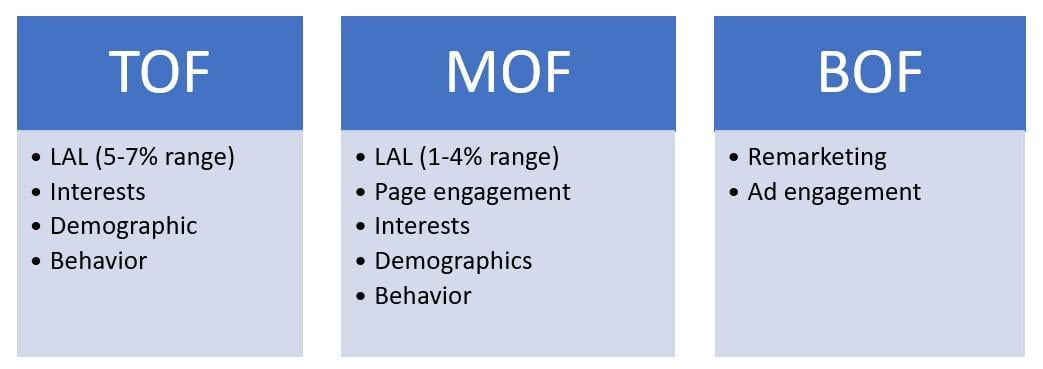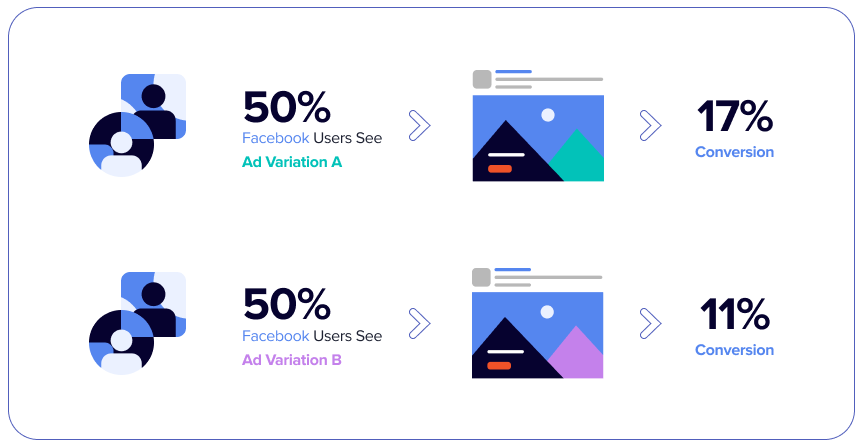
4 Facebook Ads Tips for Nonprofits and Foundations
We recently covered how a nonprofit may benefit from Google Ad Grants, which grants any eligible organization $10,000 to utilize in search ads. With your advertising budget freed up, we suggest redirecting it to another powerful platform: Facebook Ads.
More nonprofits and foundations should be advertising on Facebook. Given the fact that 60% of Canadians use Facebook daily, it’s a natural fit for any nonprofit or foundation that wants to raise awareness and encourage donations.
But more importantly, advertising on Facebook just works, due to its powerful targeting capabilities and advertising formats.
Based on what we’ve learned from running Facebook advertising campaigns for nonprofits and foundations, here are 4 Facebook advertising tips.
1. Build a funnel with segmented audiences
Creating a funnel is one of the most effective methods to utilize Facebook Ads. The odds of someone giving to your charity or engaging with your foundation the first time they view your ads are slim. You need several touchpoints to get users to convert and a funnel allows you to move prospects down these stages.
You should broaden your audience range at the top of the funnel to enable the algorithm to target a bigger pool of prospective users. When you come to the middle or bottom of the funnel, you should limit it down to ensure that you have a more qualified group of potential donors. Keep in mind that you can keep targeting your donors to turn them into promoters of your foundation.
These audiences may be drawn from Facebook’s main audience selections (demographics, interests, and behaviors) or from your own data (email lists, website visitors, custom audiences, lookalike audiences, etc).

Source: 6 Steps to Create a Full-Funnel Advertising Strategy with Facebook Objectives (wordstream.com)
Lookalike audiences are brand-new audiences with the same habits and interests as your original custom audience.
Pro tip: It’s a good idea to exclude specific audiences from your campaigns. As a result, your prospects will no longer see previous ads in the funnel, and you will save money while enhancing user experience.
2. Track Conversions
Facebook has made it easier than ever to track conversions using the tracking pixel. The concept is fairly simple – drop a small piece of code onto your website and then create a custom conversion for the action you want people to take: view some website content, donate or sign up for your newsletter.
Then you’re able to evaluate and optimize your ads based on their ability to meet that goal. Unless you do this, you’re not getting the full picture of your advertising success. Review your Events manager and make sure that you are tracking the most important touch points relevant to your nonprofit.
Pro tip: If you already have the Meta Pixel, also add the Facebook Conversions API for better conversion overview and it can help with the post-iOS 14 changes.
3. Use emotional copywriting (and other strategies)
Your ad should be clear about what the user should expect if they click on it. Keep your copy concise and to the point. Use verbs such as “give” and “donate.” Increase your credibility and create urgency by using data and numbers. You may also engage your audience by asking questions and using emotional marketing copy.
The more you appeal to your donors’ emotions, the more they will like you. Put yourself in their shoes and think of their fears, objections, and motivations. You may show that you understand them by creating content that mirrors the feelings they desire to avoid or attain. The more your content can evoke an emotional response in your visitors and readers, the more likely it is that they will remember you afterwards.
If you’re looking for ad ideas, make sure to check out Meta’s ad library to see ads from other advertisers.
Pro tip: Use your highest converting email subject lines as headlines on your Facebook ads
4. Test, test, test
If you have a limited budget, test 4 or 5 square graphics since that size works well in advertising delivered on both Facebook and Instagram. If you have a higher budget, you may compare more square graphics to horizontal or vertical orientation.
In addition, make sure that the images you choose complement the content on your landing page so that your audience knows they’re on the right page. Maintaining ad scent between the visual appearance of the offer and the copy is essential.
Now, more than ever before, video ads drive conversions and attract attention by being natural and unscripted.
It is important to use subtitles whenever possible while you are running or testing videos.

Source: A/B Test Your Facebook Ads to Boost Your Conversion Rate (madgicx.com)
Other elements to test:
- Creative: (images, font, copy, CTA)
- Audience
- Website Conversion Optimization vs Engagement vs link clicks
- Attribution windows (1-day vs 7-day)
- Auto vs Manual bid
- Placements (Mobile, Desktop, Instagram, Right column, etc). Make sure creatives are optimized for each placement.
- Test using emojis in your ad copy.
Remember, if you’re testing images, then don’t use different headlines. If you’re testing headlines, then don’t use different images, and that goes on for other elements above.
Pro tip: We recommend allocating about 10% – 15% of your budget to testing. The rest of your budget should go towards expanding the reach of your lucrative campaigns.
Conclusion
Facebook Ads are effective because of their capacity to generate audiences and funnel them into becoming warm donors for your foundation. Keep in mind that emotional copy can go a long way toward connecting with your intended audience and giving your foundation a more personable feel and identity. Along with simple conversion tracking and easily accessible testing methods, you have a plethora of opportunities to enhance your creative, ad text, audience, and a variety of other ad elements. Your next donors and champions are on Facebook, waiting to discover you.
If you want to know more about Facebook advertising for your nonprofit or foundation, contact us today!
Discover what Cyan can do for you
We want to get to know you better so we can understand what services are going to help you meet your goals.
